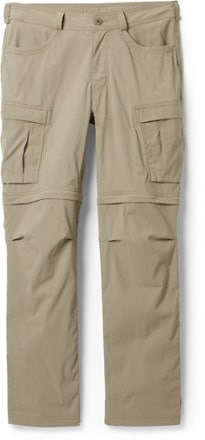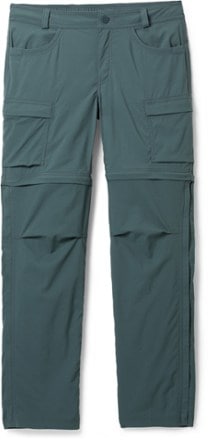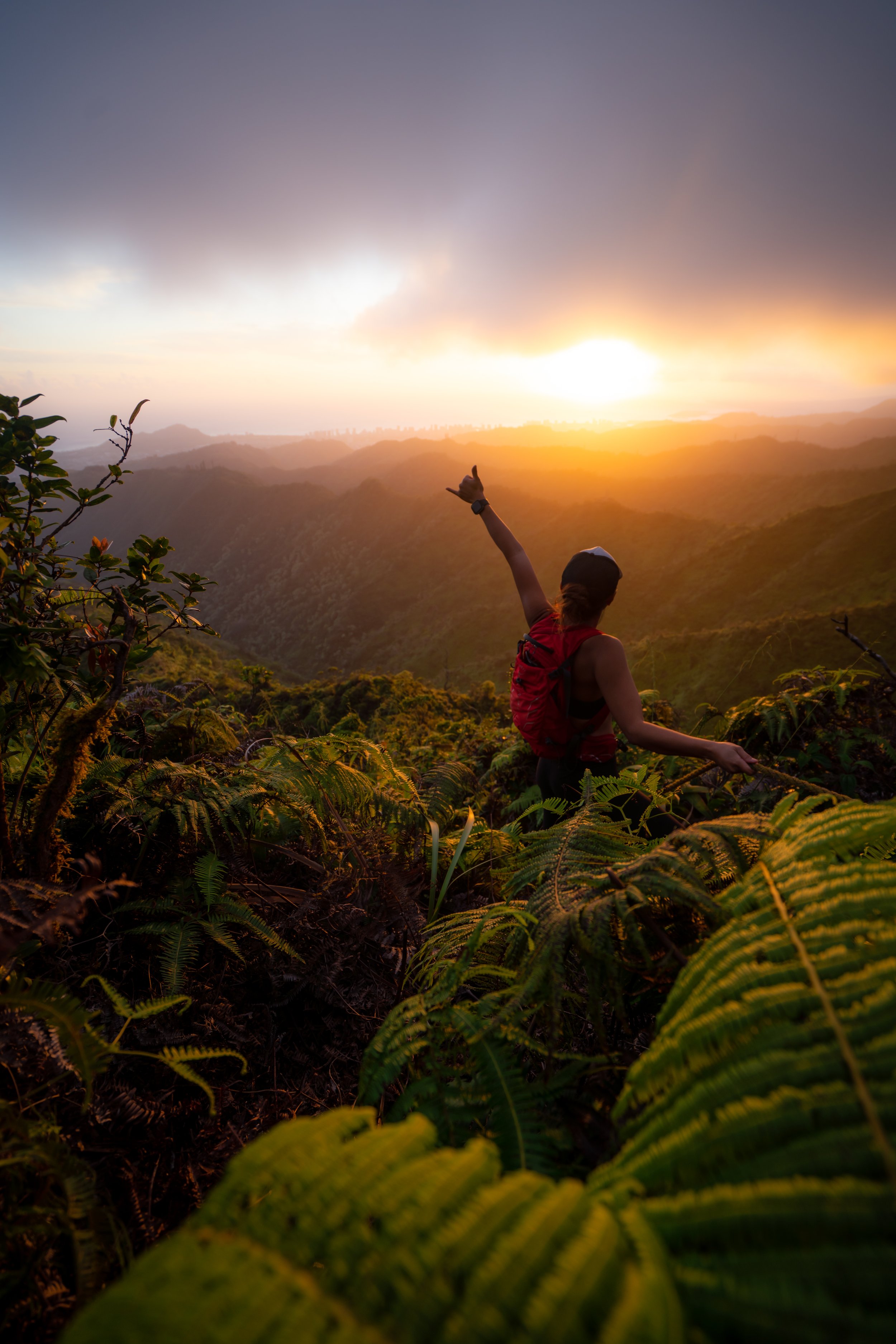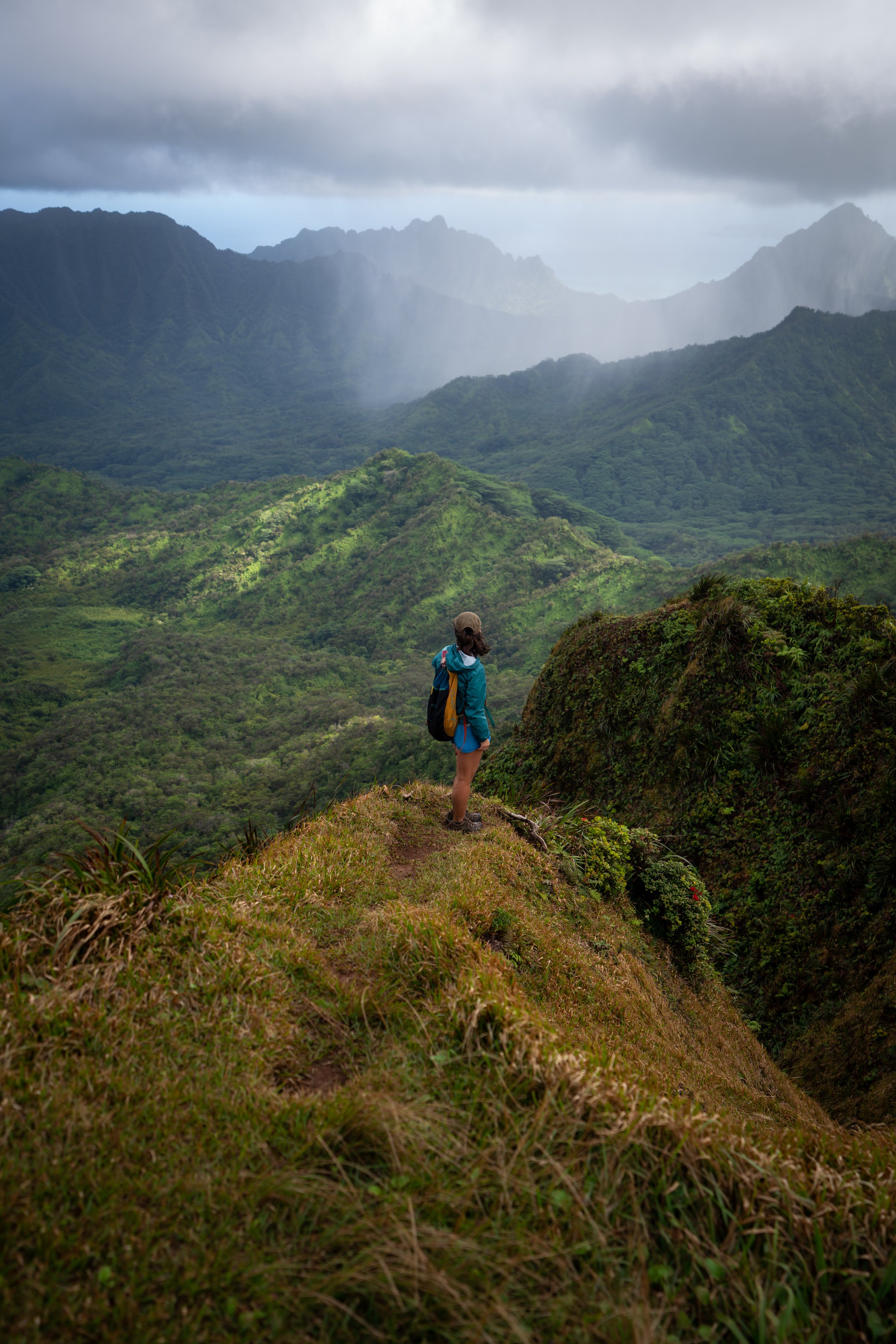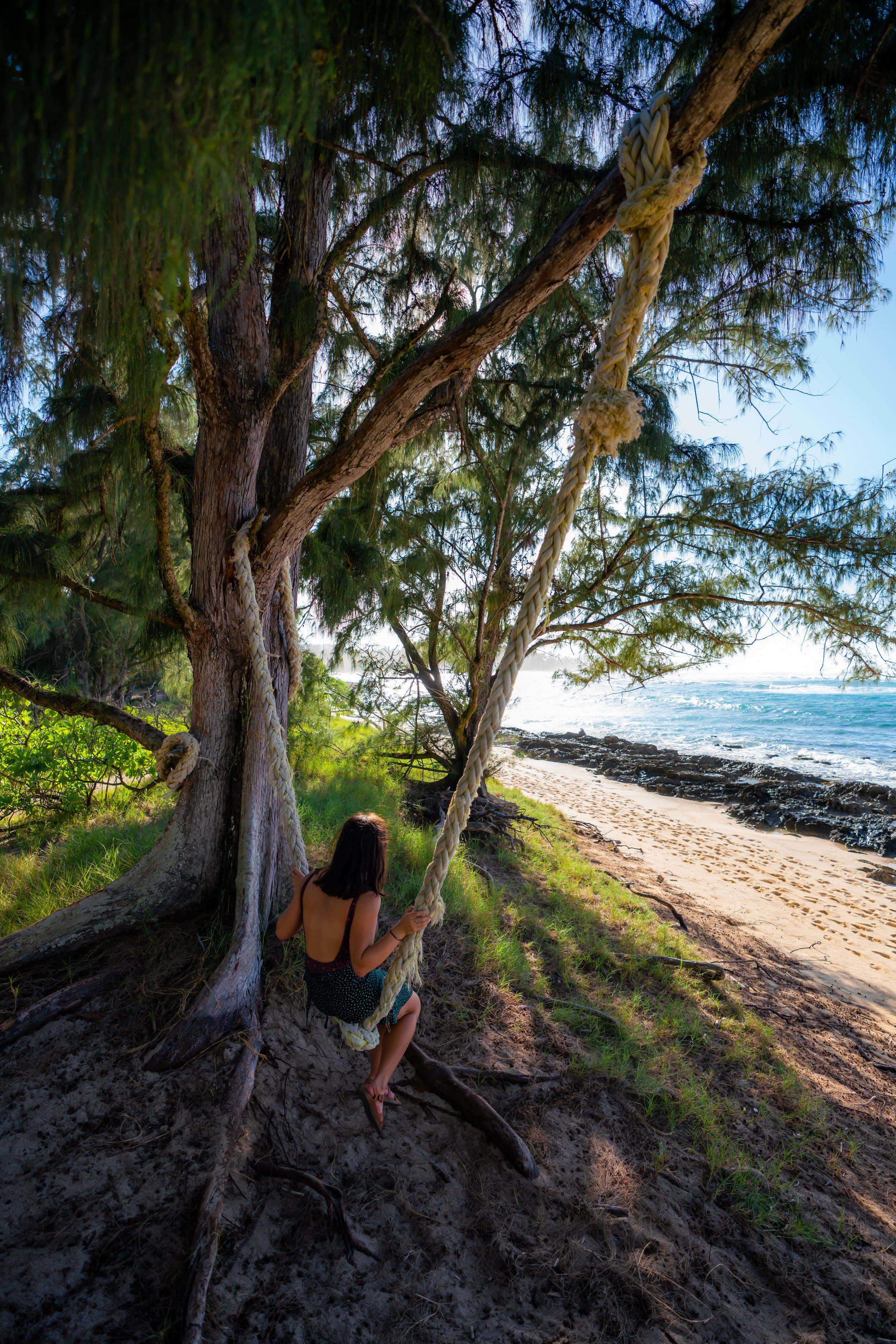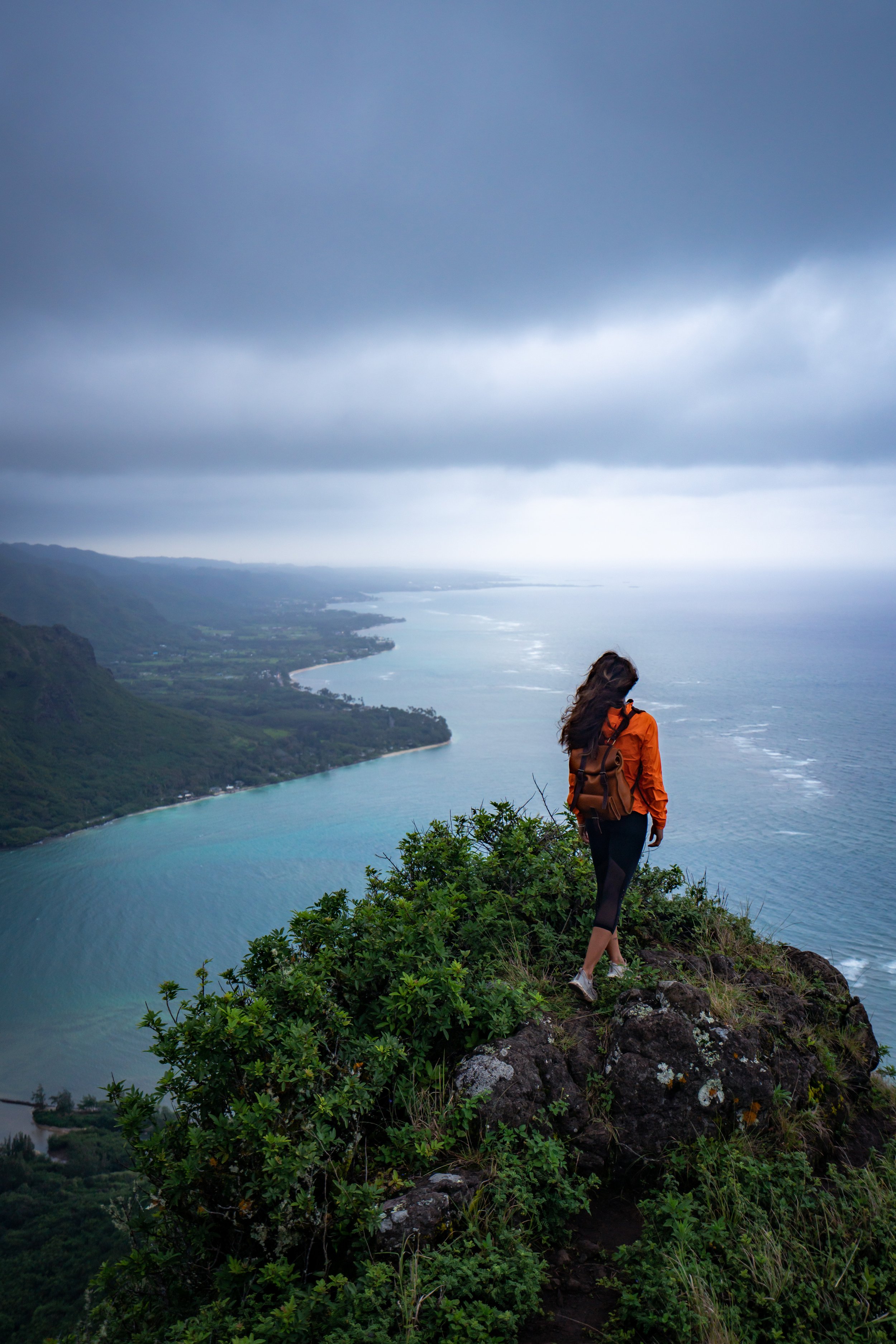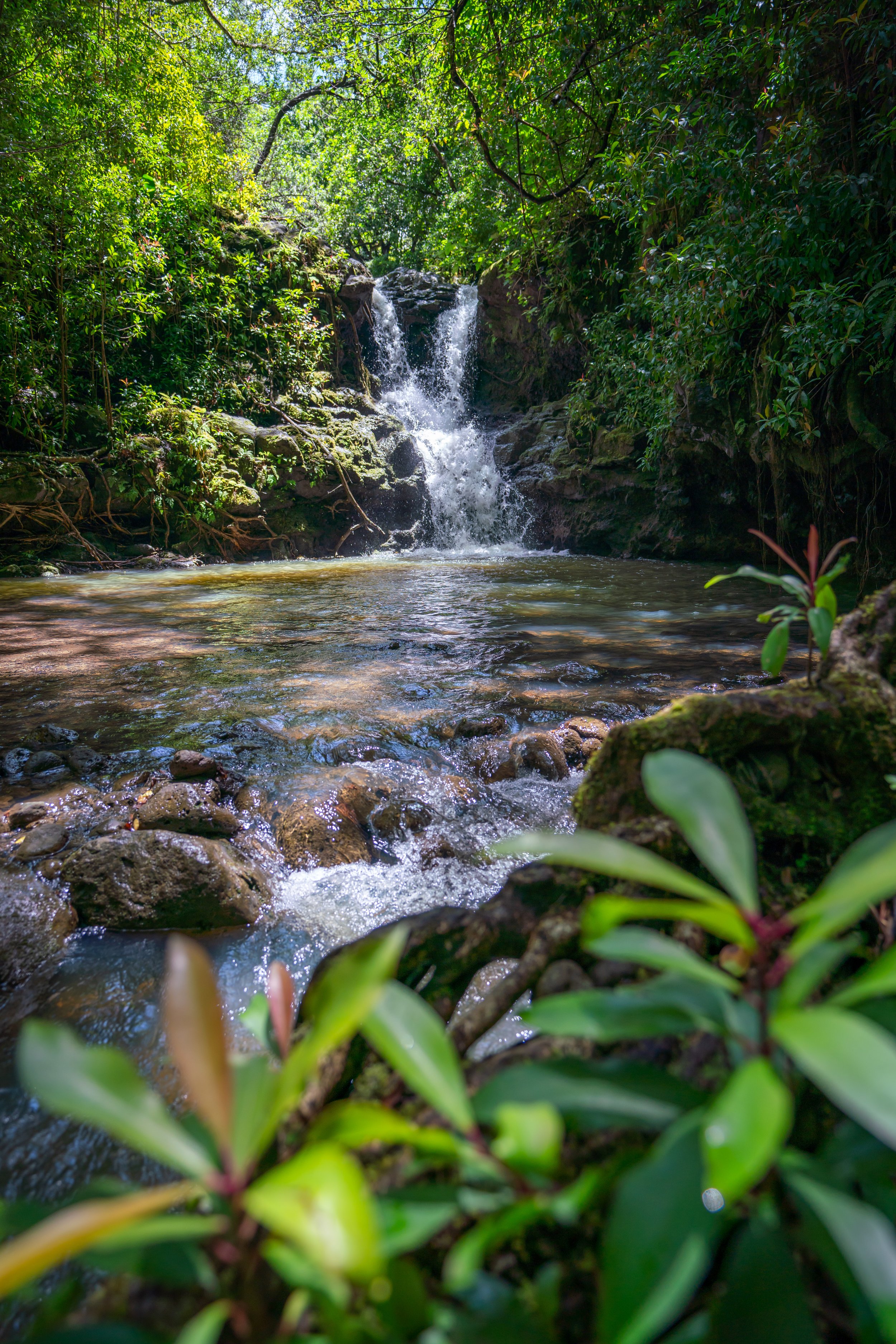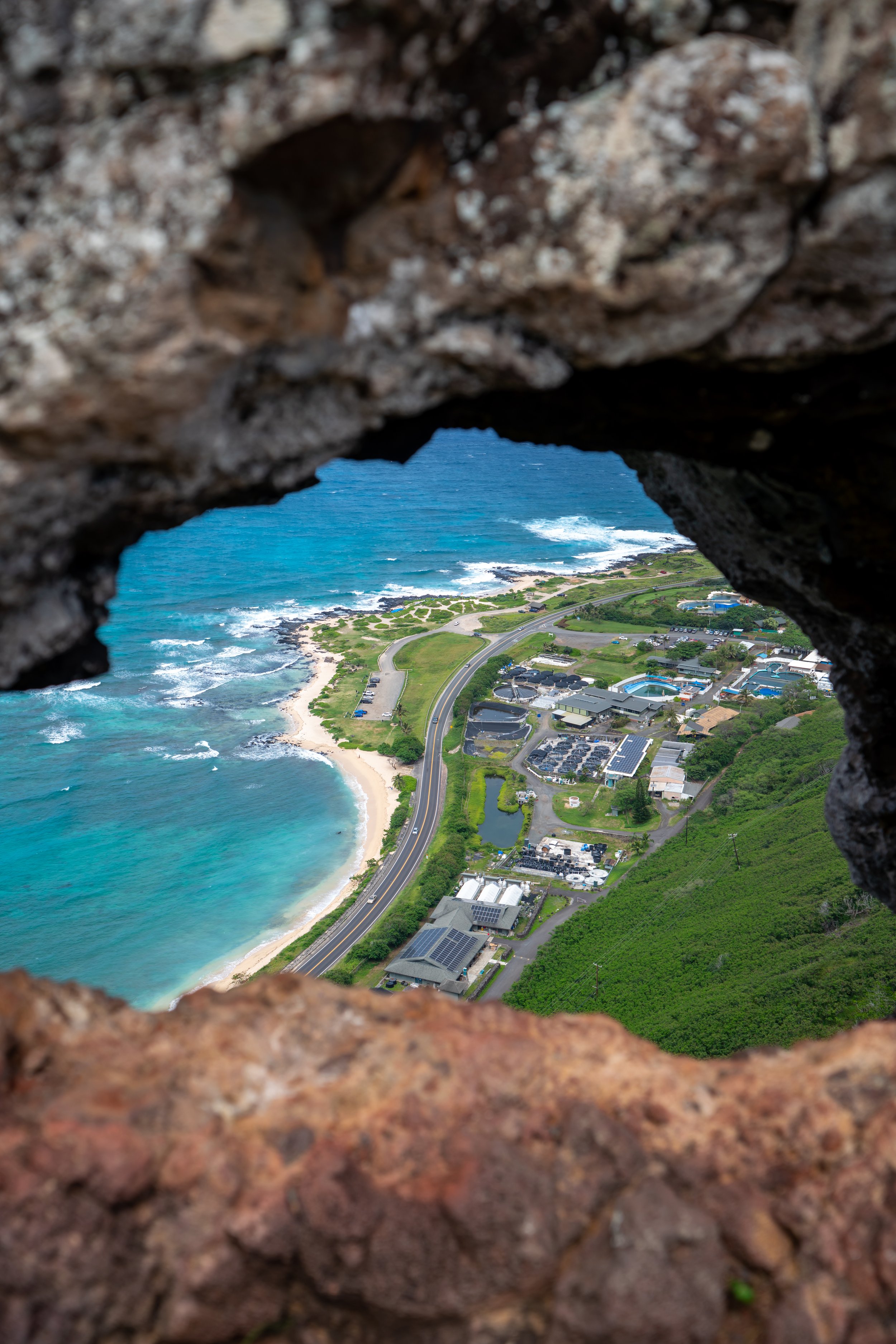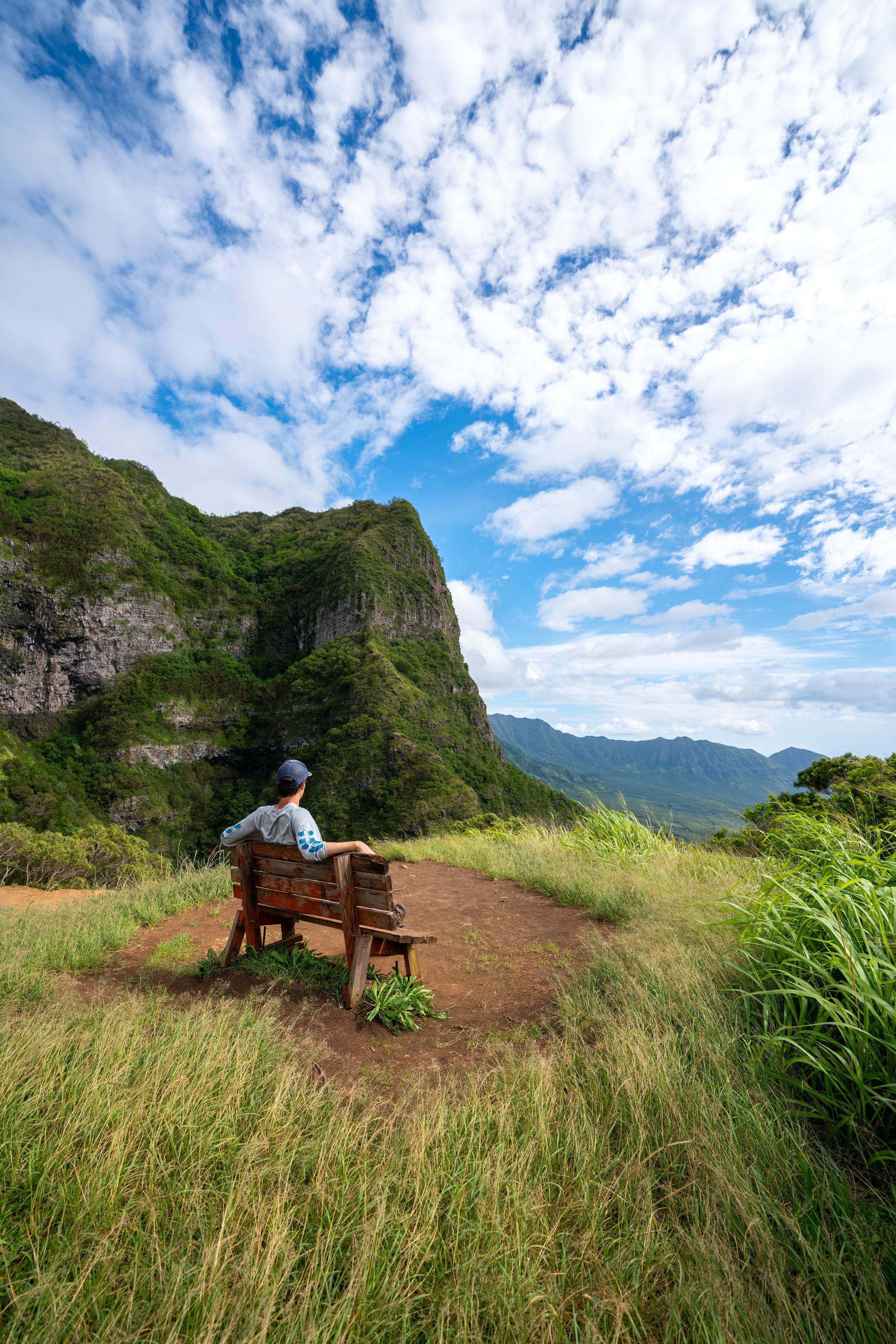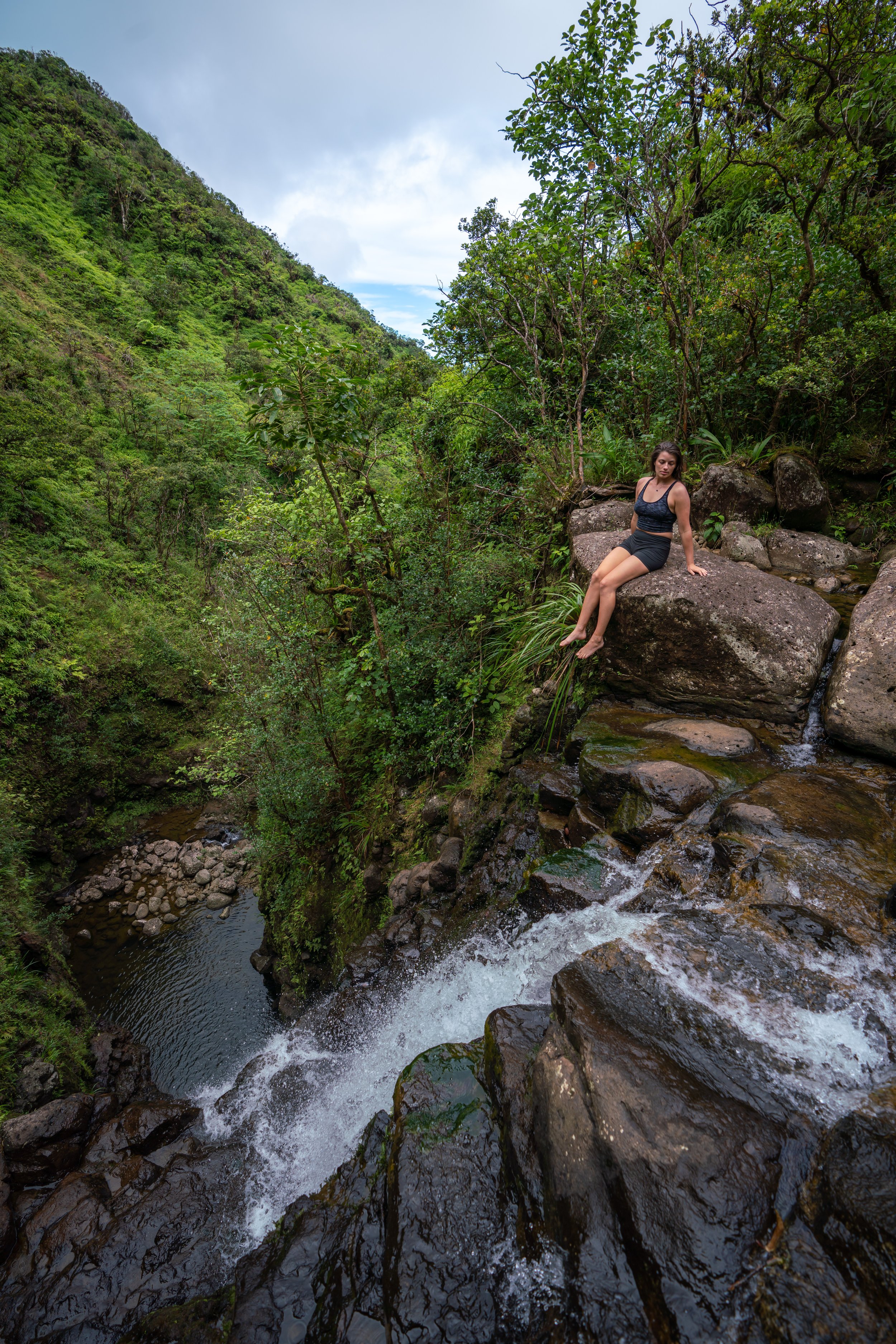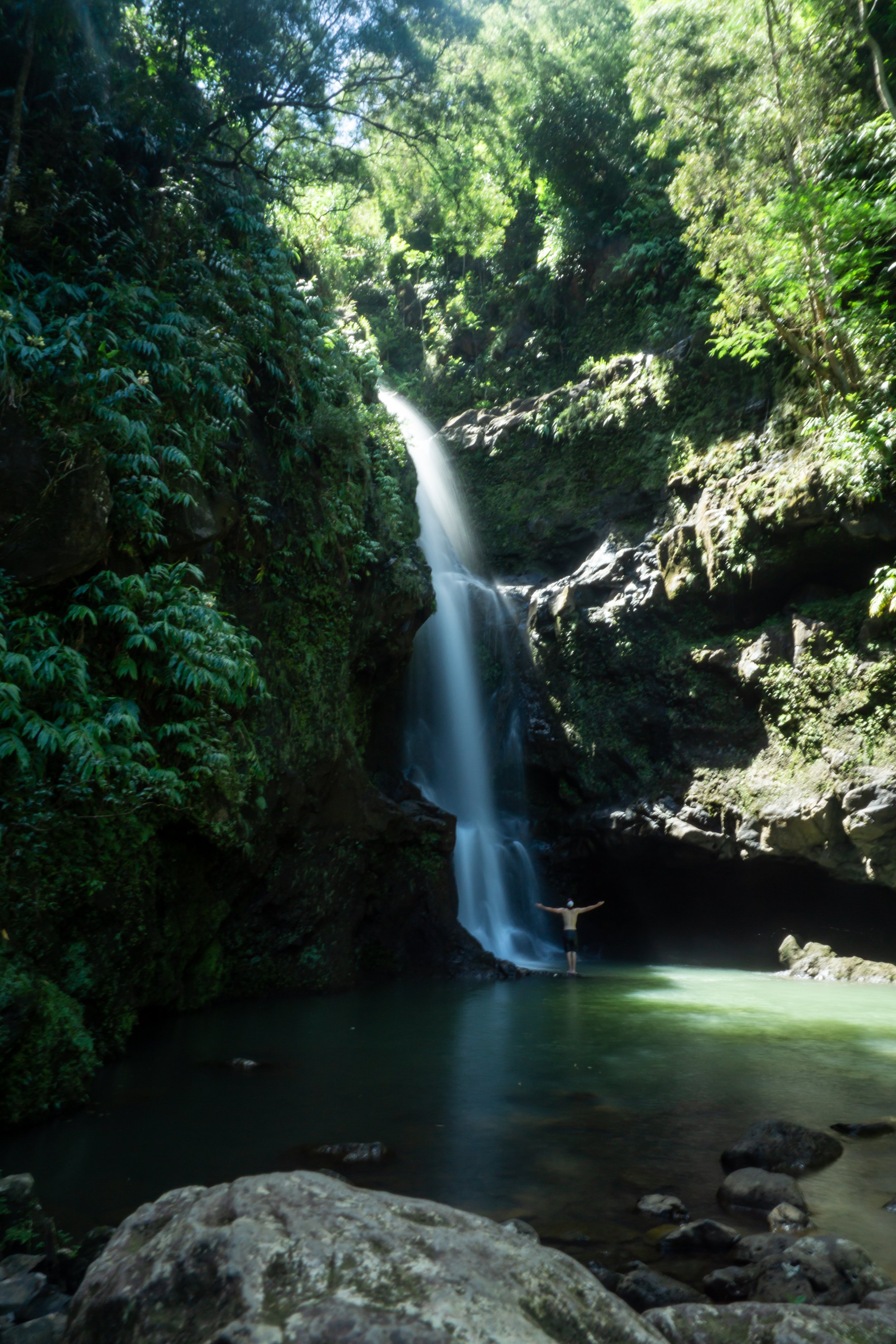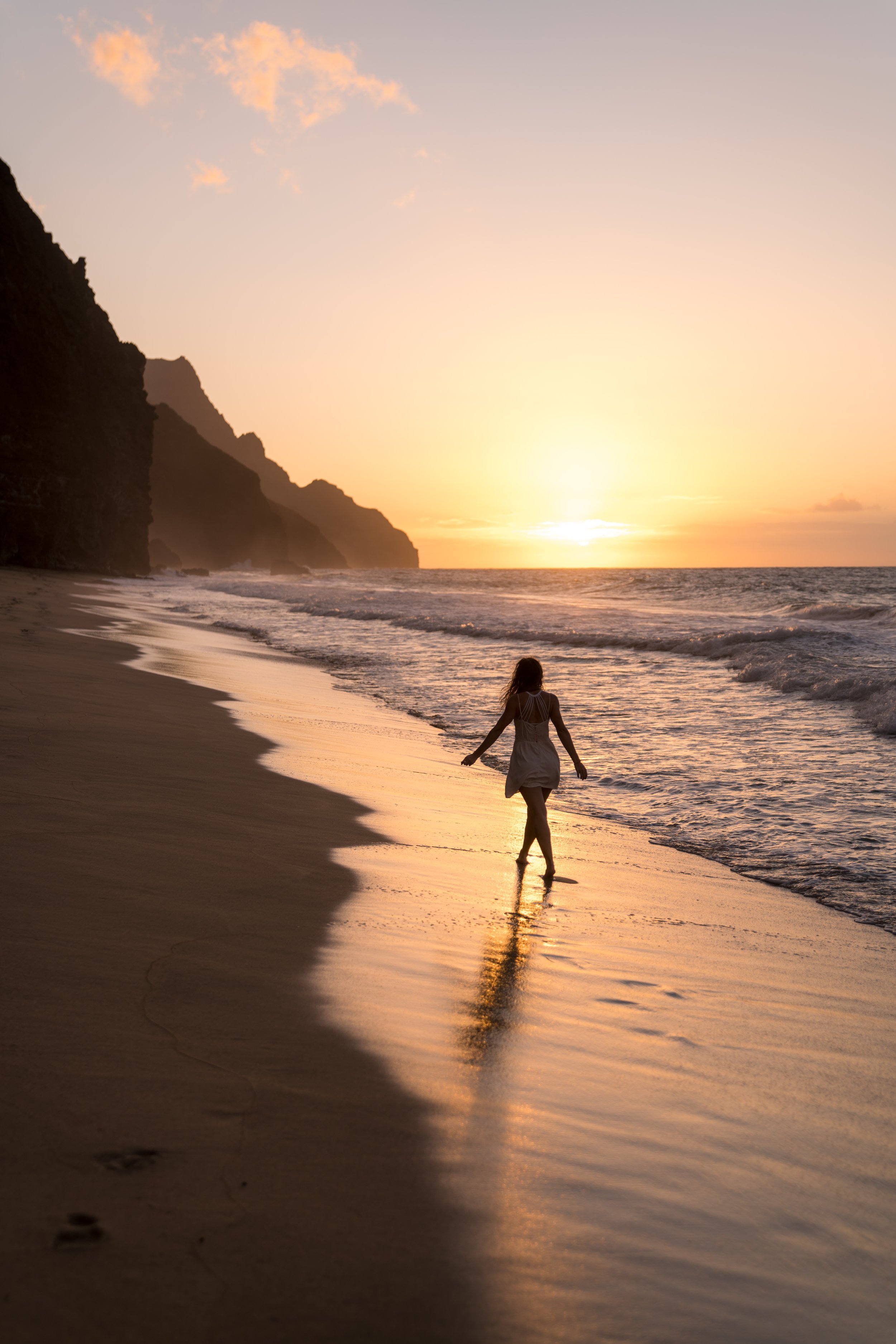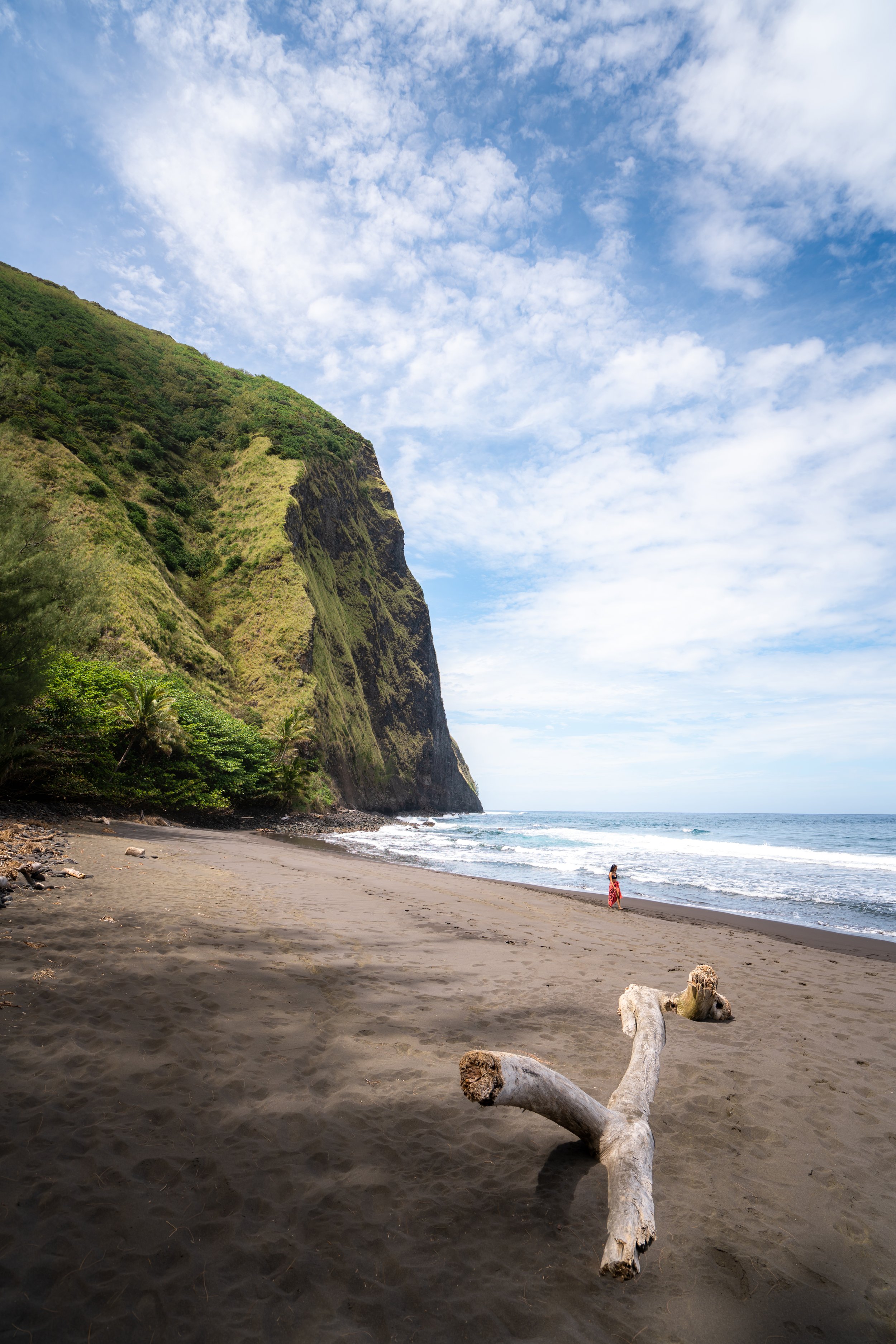Hiking the Puʻu ʻŌhulehule Trail on Oʻahu, Hawaiʻi
Distance: 8.2 miles / 13.2 km
The Puʻu ʻŌhulehule Trail on the east side of Oʻahu is one of the least trafficked windward adventures, which may come as a surprise, as Puʻu ʻŌhulehule is truly an iconic standalone peak that can be seen in countless Hawaiʻi-based movies and TV shows.
This sentiment is most likely true because of how long and tedious the approach is, but the view from the summit ridge on a clear day makes this long, muddy hike one of my Oʻahu favorites!
That said, Puʻu ʻŌhulehule is not a beginner trail. The route through the lower forest can be challenging to follow, the trail will likely be very overgrown, and the summit ridge toward the peak has at least one near-vertical section, with countless other areas that you cannot fall because of the high exposure.
I don’t say this to discourage anyone from hiking the trail, but know that Puʻu ʻŌhulehule is much more challenging than an adventure of similar distance, like Mt. Kaʻala.
Puʻu ʻŌhulehule Trailhead Parking
Parking for the Puʻu ʻŌhulehule Trail is located on the side of Kahana Valley Road just before the residential community in the valley.
However, if you have a valid hunting permit and parking pass, you can drive as far as the Nākoa/ Puʻu ʻŌhulehule Trailhead.
Google Maps Directions: Puʻu ʻŌhulehule Trailhead
My Hawaiʻi Hiking Checklist
Osprey 3L Water Bladder - The Osprey 3L water bladder is the most universal hiking and backpacking water bladder on the market, and it’s my go-to because of the slide-off seal that allows it to be quickly filled from the top. Additionally, individual parts are easily replaceable, such as the bite valve.
Blister / Heel Protectors - I swear by these cheap, amazing heel protectors to prevent blisters for nearly every kind of hiking and backpacking that I do!
Black Diamond Headlamp - Personally, I recommend the Black Diamond Storm because it is one of the brightest, lightest, and longest-lasting headlamps on the market—and trust me, the weight-to-battery-life ratio really does matter!
Hiking / Trail Running Shoes - Depending on the type of trail, I prefer to use either the Keen Targhee for longer, more rugged hiking or the HOKA Zinal Trail-Running Shoe for lighter, less intense trails. In either case, both have been amazing to me for many years across countless environments, and both can be found in men’s and women’s sizes. - (Men’s Keen / Women’s Keen) (Men’s HOKA / Women’s HOKA)
Waterproof Rain Shell - You never know when it may rain, and I’ve learned over the years that a rain shell is far better than a rain jacket. By this, I mean that it’s best to have something that the water will roll right off of, which is why I recommend the Patagonia Torrentshell 3L available in both men’s and women’s sizes.
High SPF Sunscreen - Packing high-SPF sunscreen is a must for long days outside!
Hiking the Puʻu ʻŌhulehule Trail
The Puʻu ʻŌhulehule Trail starts out on Kahana Valley Road for the first 0.6 miles (1.0 km) to the Nākoa Trailhead, which is included in the distance above.
Nākoa Loop Trail
Once at the Nākoa Trailhead, go left for the southern half of the Nākoa Loop and the Puʻu ʻŌhulehule Trail.
Read My Separate Post: Nākoa Loop Trail
Kahana Stream
Not long after the Nākoa Trailhead the Puʻu ʻŌhulehule Trail comes to the infamous Kahana Stream crossing.
There’s essentially no way around this crossing without going knee to waste deep, depending on how tall you are.
If you care about keeping your shoes dry, it’s not the worst idea to hike in slippers for the first three stream crossings.
Puʻu ʻŌhulehule-Nākoa Loop Junction
Shortly after the Kahana Stream crossing, look for the Puʻu ʻŌhulehule junction on the left.
The turn off the Nākoa Loop will be located within the first 0.1 miles (0.2 km).
Read My Separate Post: Nākoa Loop Trail
On account of flooding and so many fallen trees in Kahana Valley, this section of the trail may be shifted in one direction or another from its main course.
For example, at this split it was easiest to go right on the new trail instead of going straight (left).
These next few stream crossings are also nearly impossible to keep your shoes dry.
In my opinion, it’s best to accept it right away, or like I said, hike in slippers until the third stream crossing in the photos below.
After the first three major stream crossings, the Puʻu ʻŌhulehule Trail will gradually start gaining elevation.
Then, the trail makes a hard left turn down toward the fourth and final stream crossing.
Other than the trailhead area on Kahana Valley Road, these are some of the first views of Puʻu ʻŌhulehule from the trail.
Kawa Stream
The Kawa Stream is the fourth and final stream crossing on the Puʻu ʻOhulehule Trail.
Just after the Kawa Stream crossing, the Puʻu ʻŌhulehule Trail will begin climbing up a ridge for the remainder of the hike.
There have been times when I’ve seen the trail more maintained, and times where the Uluhe is more overgrown, like in these photos.
In either case, I recommend wearing convertible hiking pants. Shorts would be the most useful on the beginning sections through the streams and pants are must on Puʻu ʻŌhulehule as you climb the ridge toward the summit.
The pants below are my recommendations that hold up the best with the overgrowth here in Hawaiʻi, but with any hiking pants that need to be durable, make sure that they are at or near 100% nylon. This is really the most important factor!
The 'Whale’s Belly'
When it comes to hiking, this steep section of trail below the canopy is the epitome of the term 'Whale’s Belly'.
It’s steep, hot, humid, muddy, and unless it’s fairly windy, the air tends to be pretty still until you get higher up on the ridge.
Consider bringing ropes to leave behind because when the trail is at its wettest, these steep, muddy sections can require a lot more effort for everyone if you don’t have a rope.
Summit Ridge
After a long push through the Whale’s Belly, the Puʻu ʻŌhulehule Trail makes a hard turn toward the summit.
These sections to come are the steepest and most exposed parts on the entire hike.
This was taken while hiking past an ʻAkolea population.
That being said, there’s also Māmaki directly behind where this was taken, so don’t get the two confused if you’re trying to learn the difference.
Furthermore, if you are curious about trying the native Hawaiian Māmaki tea, I kindly ask that you don’t harvest Māmaki from our native forests but, instead, buy from one of the local reputable vendors, such as those listed below.
Yes, it’s really that steep, which is why I again want to suggest bringing new ropes to leave behind for both the summit ridge and the muddy section through the Whale’s Belly, as previously mentioned.
To compare the summit ridge on ʻŌhulehule with another Oʻahu trail, I think it’s most comparable to the steep sections in the beginning of Lulumahu Ridge.
Toward the top, Puʻu ʻŌhulehule levels out significantly from the middle portions of the summit ridge.
This is a change that you can see better from far away, but it’s a nice sign that you’re getting close to the top!
Puʻu ʻŌhulehule
The summit of Puʻu ʻŌhulehule is very overgrown, and the best views are on the far side of the peak.
The summit has one of the larger wild Olonā populations out there, meaning that there are at least three of the four native plants on Puʻu ʻŌhulehule that host the Pulelehua (State Insect).
On the far side of the peak above the Southeast Ridge, Puʻu ʻŌhulehule has some of the best views of windward Oʻahu.
It was fun watching the tours on Kualoa Ranch go by below.
Southeast Ridge
The Southeast Ridge on Puʻu ʻŌhulehule has been regarded as one of most challenging hikes by some very good Oʻahu hikers.
In my experience, I think there are other trails that are much more challenging, such as Puʻu Piei Makai, but in any case, I don’t think I would ever head down the Southeast Ridge from the summit of ʻŌhulehule.
In my mind, it’s a one-way hike up the ridge from Pride Rock.
I say this to say that the Southeast Ridge on Puʻu ʻŌhulehule is not easier than returning back through Kahana Valley. When I did hike the Southeast Ridge, we started at Pride Rock and ended in Kahana, which is the only way I’d recommend the route to anyone.
Overall, it’s much more challenging than Puʻu ʻŌhulehule alone, and only experienced Oʻahu hikers should attempt a ridgeline like this.
Native Plants on the Puʻu ʻŌhulehule Trail
On top of Kahana Valley being covered in non-native/ invasive plants, Puʻu ʻŌhulehule is a very weedy peak.
That said, there are a variety of native plants that you can find in the lower valley, such as Hala and Hau, and as the trail gains elevation, look for other natives, such as ʻŌhiʻa, Koa, Uluhe, Māmaki, ʻAkolea, ʻAhakea lau nui, and Olonā on the summit.
If you would like to learn more about these and other native plants from across the islands, check out my separate post at the link below.
Read My Separate Post: Native Hawaiian Plant Guide
More Oʻahu Adventures
If you’re interested in reading about some more amazing Oʻahu adventures, check out my separate posts below!
Best Hotels & Restaurants in Waikīkī
If you’re trying to decided where to stay on Oʻahu, check out my top 10 list for the best resorts and restaurants in Waikīkī.
I break down what makes one hotel a better choice over another, so that you can find the best fit for your stay on the island.
Read My Separate Post: Best Waikīkī Hotels & Restaurants
HNL Airport-Hotel Shuttle
Prices on ride-share apps like Uber/ Lyft cannot beat the price of booking your hotel shuttle prior to arrival. I say this because there are additional fees for ride-share airport pick-ups at Honolulu Airport (HNL), which is why I recommend booking your transportation in advance using the options below.
Additionally, the last option below will go as far as the Ko ʻOlina Resorts on the West Side and Turtle Bay on Oʻahu’s North Shore!
Best Way to Book Rental Cars!
I travel quite a bit, and I know firsthand that finding a good rental car deal can be a challenge, but that’s why I recommend comparing all of your options with Discover Cars.
In short, Discover Cars is a well-known, reputable business that allows you to search for the best deal across companies, and they have the best full-refund cancellation policy I’ve ever seen, valid up to 72, or sometimes even 48, hours prior to your reservation!
Book Here: Discover Cars
Visiting Other Islands
If you are visiting Oʻahu or heading to another island, check out some of my personal recommendations for Oʻahu, Maui, Kauaʻi, Molokai, Lānaʻi, and Hawaiʻi Island (Big Island) in these separate posts.
If you’re trying to decide which island is right for your visit, check out my overview about each island in the post below.
Read My Separate Post: What is the Best Hawaiian Island to Visit?
What is the Best Time of Year to Visit Hawaiʻi?
The weather in Hawaiʻi can often appear to be warm and beautiful throughout the year, but in my experience, there is a lot more to consider when planning what time of year to visit the islands, such as what island you are considering, what sides of each island do you plan to stay, what activities are you most interested in, the wildlife, and countless other nuanced variables that can all impact the type of trip you can expect to have.
For these reasons, I highly recommend reading through my separate article to not only understand my thoughts regarding the best time of year to come to Hawaiʻi but also what you need to consider based on the time of year that you plan to visit.
Read My Separate Post: What is the Best Time of Year to Visit Hawaiʻi?
10 Best Tours & Excursions on Oʻahu
There are a lot of different tour options to choose from on Oʻahu, but to make it easier to decide, I made a list of my favorite tours because some things simply are better with a local guide!
Read My Separate Post: Best Tours on Oʻahu
Safety
All hikes in Hawaiʻi should not be compared to trails outside of the islands, and hikers should exercise due caution on every adventure, given that many are extremely dangerous.
By this, I mean that Hawaiʻi is known for hot, humid weather, steep, dramatic, and unstable cliffs, and flash floods, which can occur without warning. Therefore, it is important that you check the local forecast, understand the physical condition of your entire group, and pack sufficient food and water before attempting any adventure.
Disclaimer
All information provided on this blog is for informational purposes only and is not intended to be a substitute for information or advice from qualified professionals or managing agencies.
Noah Lang Photography LLC makes no representations or warranties regarding the accuracy or completeness of the information provided here, and readers should use their own discretion, judgement, and seek professional advice where it is appropriate.
Furthermore, Noah Lang Photography LLC shall not be held responsible for any injuries, lost individuals, or legal issues arising from the use of information provided on this website, and if applicable, the above safety disclaimer should be referenced to provide a generic overview of the risks involved.
All said, the content on this blog is for the sole use of Noah Lang Photography LLC, and unauthorized use or reproduction of this content is strictly prohibited.
Disclosure
This post is not sponsored.
However, some of the links in this post are affiliate links, which means that I may earn a small commission if a purchase is made through one of those links. This commission comes at no additional cost to you, and I only recommend products that I personally use and believe will add value to my readers. Thank you for your support, which enables me to continue creating more!
To read the full privacy policy, click here.

About This Blog
Noah Lang Photography, also known as @noahawaii, is 100% reader-supported!
I do not accept guest articles or sponsored content of any kind on my blog, which is why, if you enjoy the outdoor and travel content I create, please consider buying me a coffee!
I appreciate your support, which helps me continue to keep this blog alive!










